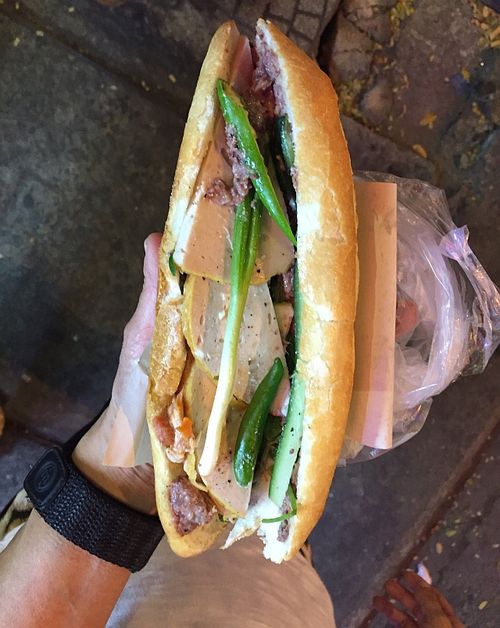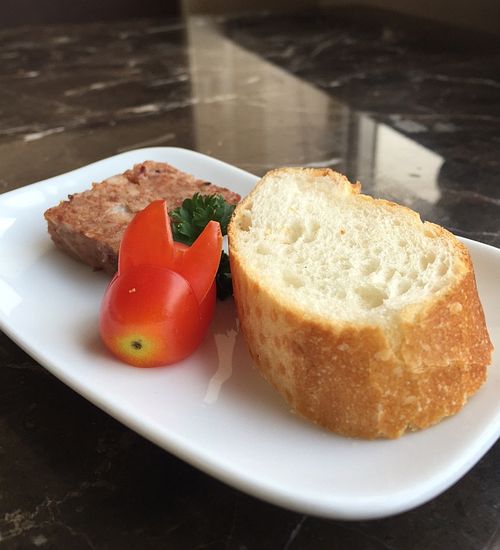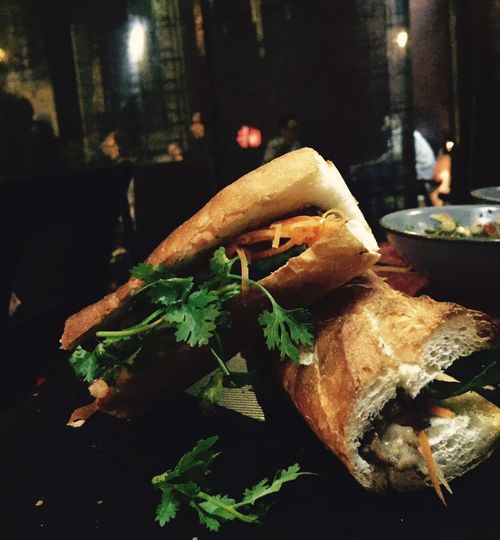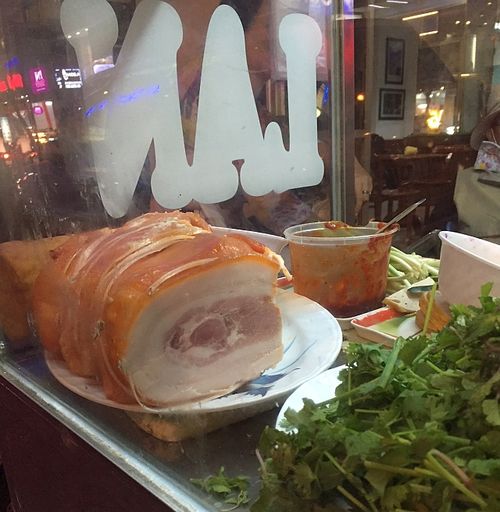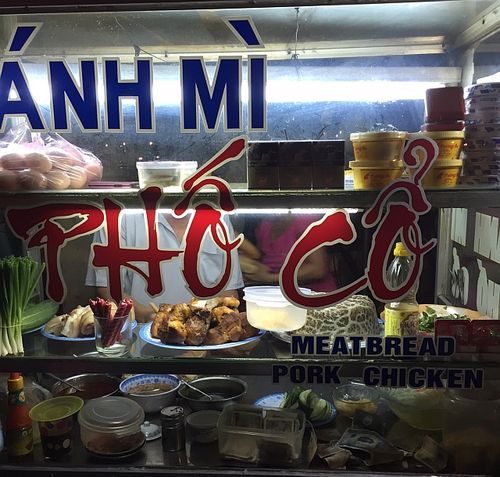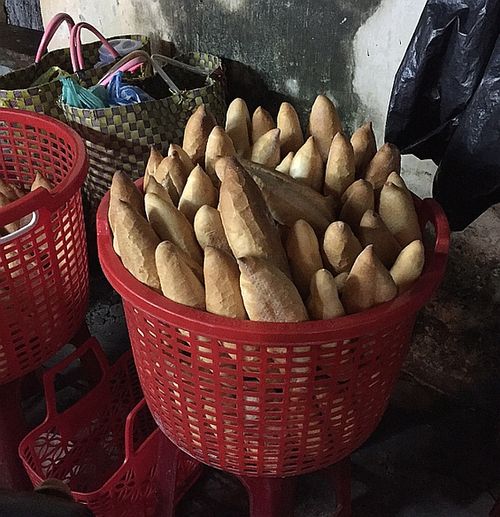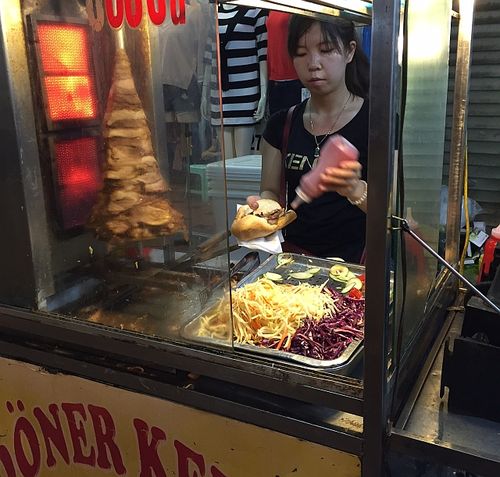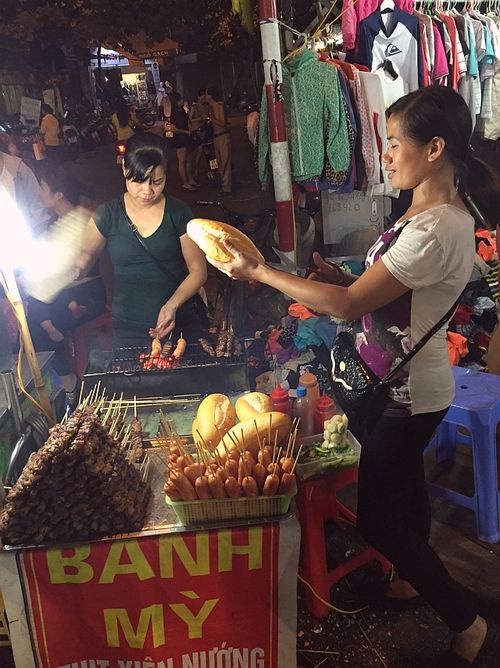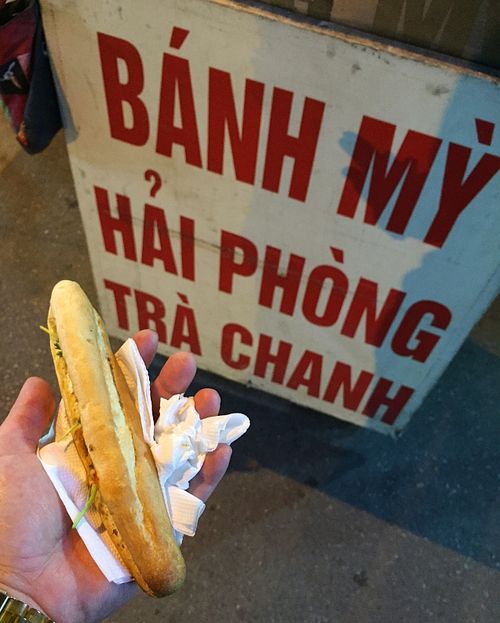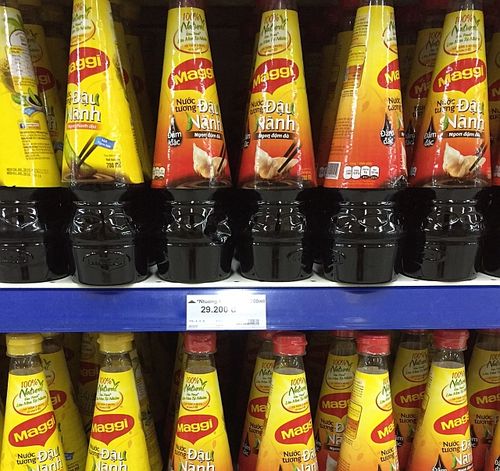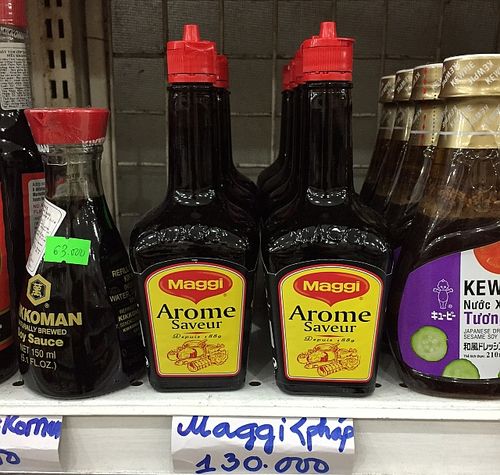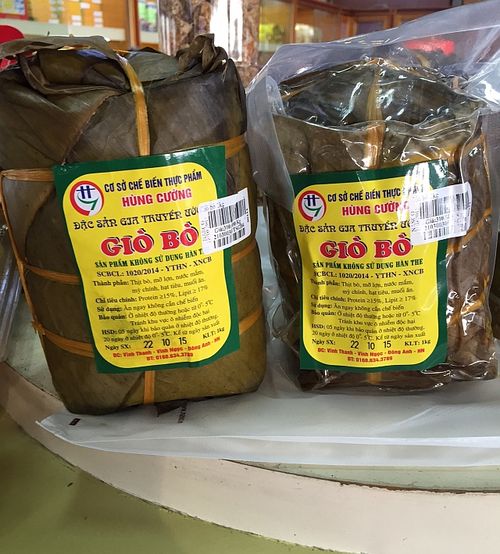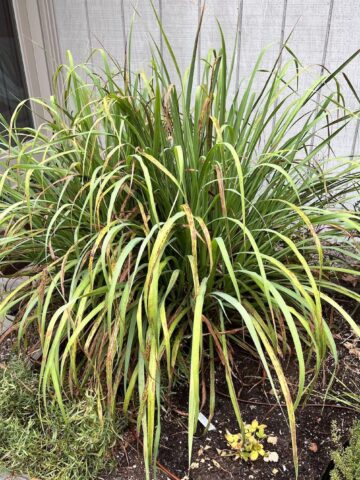My recent trip to Vietnam was to check in with Red Boat fish sauce on Phu Quoc island and go on a little pho expedition for the book. But along the way, my travel buddy and stylist Karen Shinto and I could not help but take part in the local banh mi scene. I posted some photos along the way on Facebook, Instagram and Twitter but here’s a more thorough recap of what we tried and learned.
Do you want to eat banh mi inside at a cafe or at the hotel breakfast buffet or do you want to hit the street? I sampled all options to see.
If you’re starting out with Viet food or just starting out your day, it’s fun to compose your own little sandwich for breakfast –- kinda homey. This is from the Essence Diamond hotel in Hanoi. The pate was nice and the tomato decoration cute. With butter, salt and pepper, and cucumber on baguette, it was a fitting open-faced banh mi. Very simple. Like how I grew up eating banh mi at home in the morning.
My friend and Hanoi street food expert Mark Lowerson said that the simple Hanoi banh mi is getting pushed a bit to the wayside. He’s noticed more Saigon-style banh mi vendors in the city, selling sandwiches loaded up with pickles and other accoutrements. Hanoi food is not overly fussy and you’re suppose to taste the craft of the ingredient. Maybe Saigon banh mi is letting people loosen up a bit. If you travel to Vietnam’s capital, check in with Mark and his partner Tu Cong Van for personalized, thoughtful Hanoi street food tours. They’re local residents and keep their eyes on what’s best.
At a very swank, arty bar-cafe, I ordered the worse banh mi that I’ve ever had in Vietnam. The bread fell apart, was nearly burn, and the pork belly filling was non descript. It was truly disappointing and I vowed to keep to the street for my sandwich fixes.
Should you go with banh mi street vendors who are popular? There are lots of banh vendors in Vietnam but just a handful have been called out by Anthony Bourdain and others on Tripadvisor and the like.
In Danang and Hoi An, my brother in law Tiet, and friends Tu and Yun Ho Rhee had specific recommendations that I validated through Foody.vn – the Viet version of Yelp. But did I go to those recommended spots? No. Instead, I relied on my eyes and the moment to spot a banh mi vendor at her or his best.
“What are you looking for?” Karen asked.
All she observed me doing was walking over to the cart, scanning the operation and making a quick decision. Vietnam has countless banh mi vendors so why go to just the ones that are safe bets? They may be good and their excellence is likely to push others to up their banh mi game.
What I looked for in potential banh mi vendors:
- Is the vendor busy and tidy? Is the vendor filling customer orders and cleaning up as she/he goes along?
- How does the bread look? Are the rolls fresh and crisp or tired and soft?
- Do the filling and condiments look well made, or better yet, homemade? This pork belly below looked promising to me.
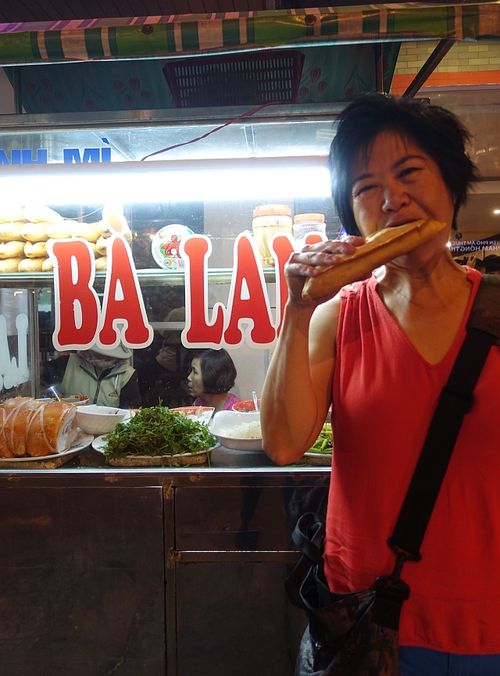
When I chatted up the vendor she told me she’d been selling banh mi in Danang on Phan Chau Trinh street for 20 years. Business used to be really good and she’d sell maybe 300 banh a day. Now, it was more like 100 to 150. There were many Ba Lan Banh Mi on the same street and the original one is near the Cham Museum, however, I liked this Ba Lan woman’s honesty.
She made the mayonnaise and meats herself. The bread was what she didn’t make. She started selling in the evening so I came back to try out her sandwich. (We stayed at the roomy Sanouva Hotel, which was strategically located within walking distance of lots of good eats.)
How was her sandwich? Very good, loaded with black pepper and a tinge of chile heat. Here’s a video of how she put one together; she's on the phone as she's working. Note how she warms the sandwich up.
In Hoi An, Banh Mi Phuong and Khanh are suppose to make the best sandwiches around but I opted for this stall on a busy corner of Le Loi and Phan Ding Phung. At Banh Mi Pho Co (Old Town Banh Mi), the meats and pate look great.
I also spied his bread in the basket too. Both looked phenomenal and I had to get a couple banh mi sandwiches We ate them in the taxi on the way back from Hoi An to Danang. Note that the bread in Danang is shaped in a slender pointed torpedo shape. It’s a little denser than bread I tasted elsewhere; there was nice crunch, perhaps due to rice flour.
In Hanoi, there were only a handful of food options at the Friday through Sunday night market in the Old Quarter. You had Korean food snacks (!), cut fruit, or banh mi. I opted for banh mi and sampled a couple.
Yes, Doner Kebab banh mi with meat cooked on a spit was an idea brought over from Germany. There’s a recipe for a homemade version in the Banh Mi Handbook. The rendition at the Hanoi night market was a bit bland, but something new in the world of banh mi.
The night market was a place for young people so grilled sausage banh mi is popular. Xuc xich is Viet pidgin for sausage. You could have it on a banh mi roll for a giant hot dog of sorts. Look how the gal used scissors to cut the bread.
And there was banh mi breadsticks – small and cute, filled with a pate-ish meat sauce, chile, cilantro and some pork floss (thit ruoc bong). You could eat 4 person. In Hanoi, the tiny banh mi were called Banh Mi Hai Phong (named for the port city of Hai Phong). Serena Cain, a native of Danang, reported on Instagram that there’s a Danang version called banh mi que – literally breadstick banh mi.
Do Viet people make banh mi at home? I went to a few supermarkets and small stores and found these ingredients on hand:
Maggi Seasoning sauce – the same one as what I wrote about recently, was indeed widely sold in Vietnam. In fact, the flavor of Maggi is what defines “soy sauce” nowadays in Vietnam. It’s a bit disconcerting to me because there’s a difference between traditional Chinese soy sauce and Maggi or a Maggi-esque condiment. They are not the same.
The surprise was the availability and price of imported Maggi from France; roughly speaking, the Danang store’s price of 130,000 VDN is roughly $5.90 – about the same as what you’d pay in America.
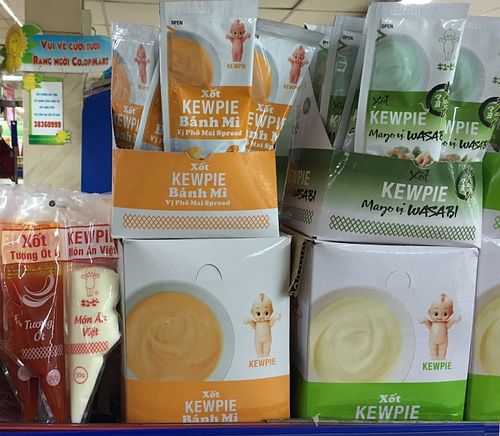
Japanese Kewpie products are popular in Vietnam. Lots of Kewpie mayonnaise is sold at the markets. Note the Kewpie banh mi mayonnaise, which had cheese and chile sauce. These packages and others for mayonnaise were atop the frozen food aisle at this supermarket in Saigon.
And if you were looking for a souvenir, at Hanoi’s Noi Bai airport in the domestic terminal, you could buy artisanal (gia truyen) gio bo beef sausage to make banh mi. (Or, you can make it yourself via the recipe in the handbook.)
I make and eat a lot of banh mi and you’d think that I’d be tired of them. It’s the opposite. There are so many renditions and cooks have plenty of room to create. Going to Vietnam opened my eyes even wider to the vast world of Vietnamese sandwiches. Not everything I sampled was good, but every one of them gave me insights on making them, as well as the people behind them.
If you have suggestion or tips to share, do share them!













